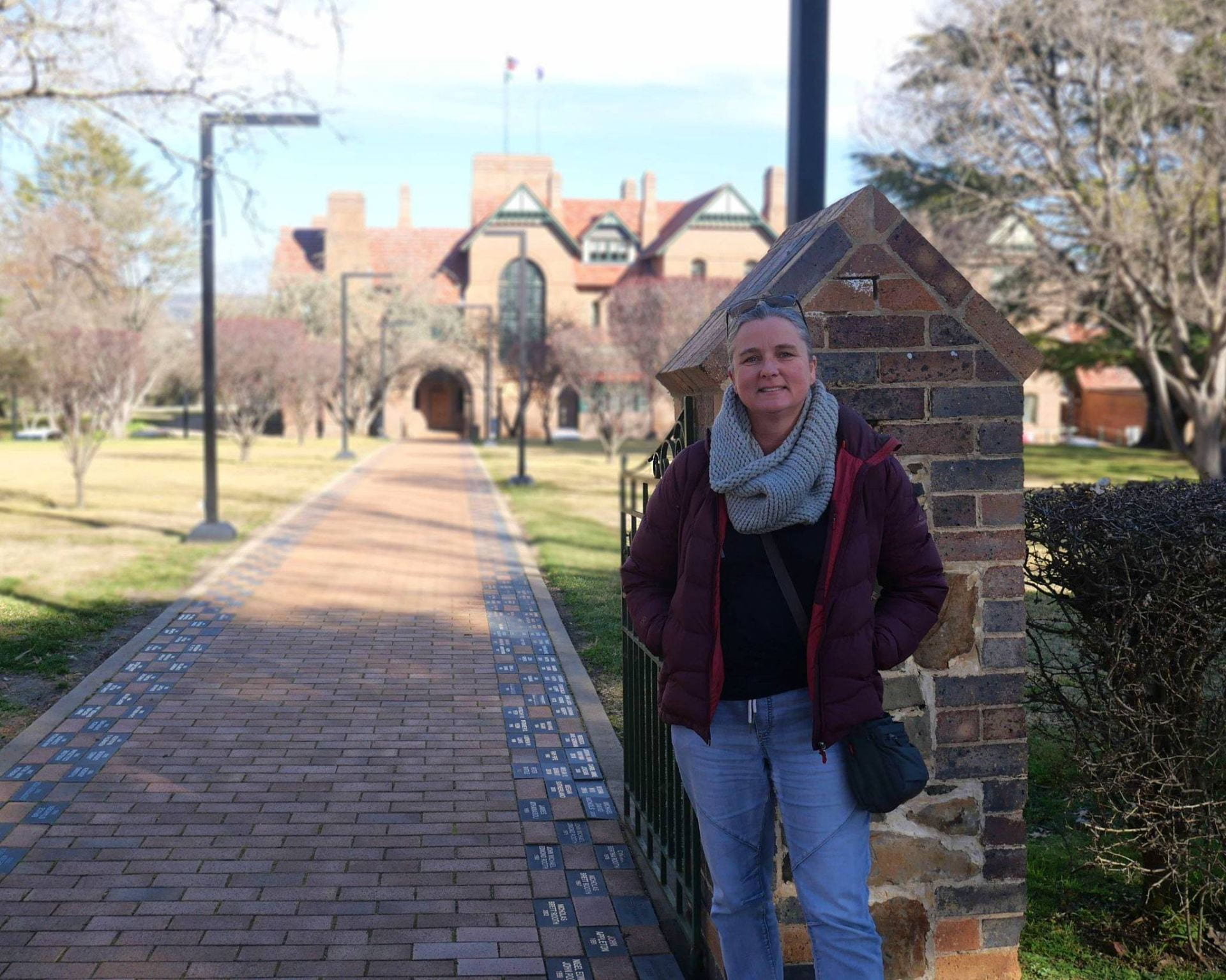Former UNE postgraduate student and passionate researcher, the late Di England, spent 20 years studying the Indigenous rock art of the remote Kimberley region. Di sadly passed away in 2019, although her research continues thanks to a bursary dedicated by her family.
“We knew how important the work was to Di – and she was never one not to finish something she had started,” says John England, who joined his wife on three of her field trips. “It’s an important scientific record, and we want to maintain her interest and passion in rock art, as well as help someone else.”
That someone is UNE alumna, archaeologist and PhD student Samantha Keats, who is excited about furthering such important archaeological research.
Samantha began her PhD this year after UNE Adjunct Professor June Ross informed her about Di England’s work in the north-west Kimberley, and asked if Samantha would be interested in completing the research project at a PhD level.
“I had always wanted to do a PhD, but my criteria was that I had to be passionate about it, it had to be rock art and it had to be somewhere amazing. This kind of ticked all the boxes for me. It was when I was being accepted into the PhD program that June told me about Di’s husband, John, and how he wanted to help the student that undertook this with expenses and getting back to the Kimberley.
“June, Mark Moore (Samantha’s current supervisor) and I were going to go to the Kimberley in May this year to meet with the local Aboriginal community. We were going to talk about my PhD project and continuing on from Di’s work there.” Unfortunately due to the COVID-19 situation these plans have been delayed, but Samantha is eager to continue the fieldwork component of the research as soon as possible.
In 2008 Di England enrolled in a Diploma in Indigenous Archaeology at UNE with Dr Ross and was drawn into the intriguing investigations of the Rock Art Team, a team of experts consisting of academics from various universities. Working with traditional owners from the Wanumbul Gaambera Aboriginal Corporation and the Kandiwal Aboriginal Corporation, the team explored continuity in the archaeology, art, beliefs and land-uses of the first inhabitants of the rugged Mitchell and Lawley river catchments.
This line of research and collaboration is now being continued by Samantha. “I had a really strong sense of responsibility to Di and her family, and really respecting her part in the research. I feel sad that I didn’t get to meet her. I feel there is a legacy that I want to carry.”
Once her PhD studies are completed, Samantha is interested in continuing to work in this field because of her passion for Australian rock art and researching in the area. “I think Australian rock art is quite unique in the amount there is, and the antiquity and beauty of it.”



Recent Comments